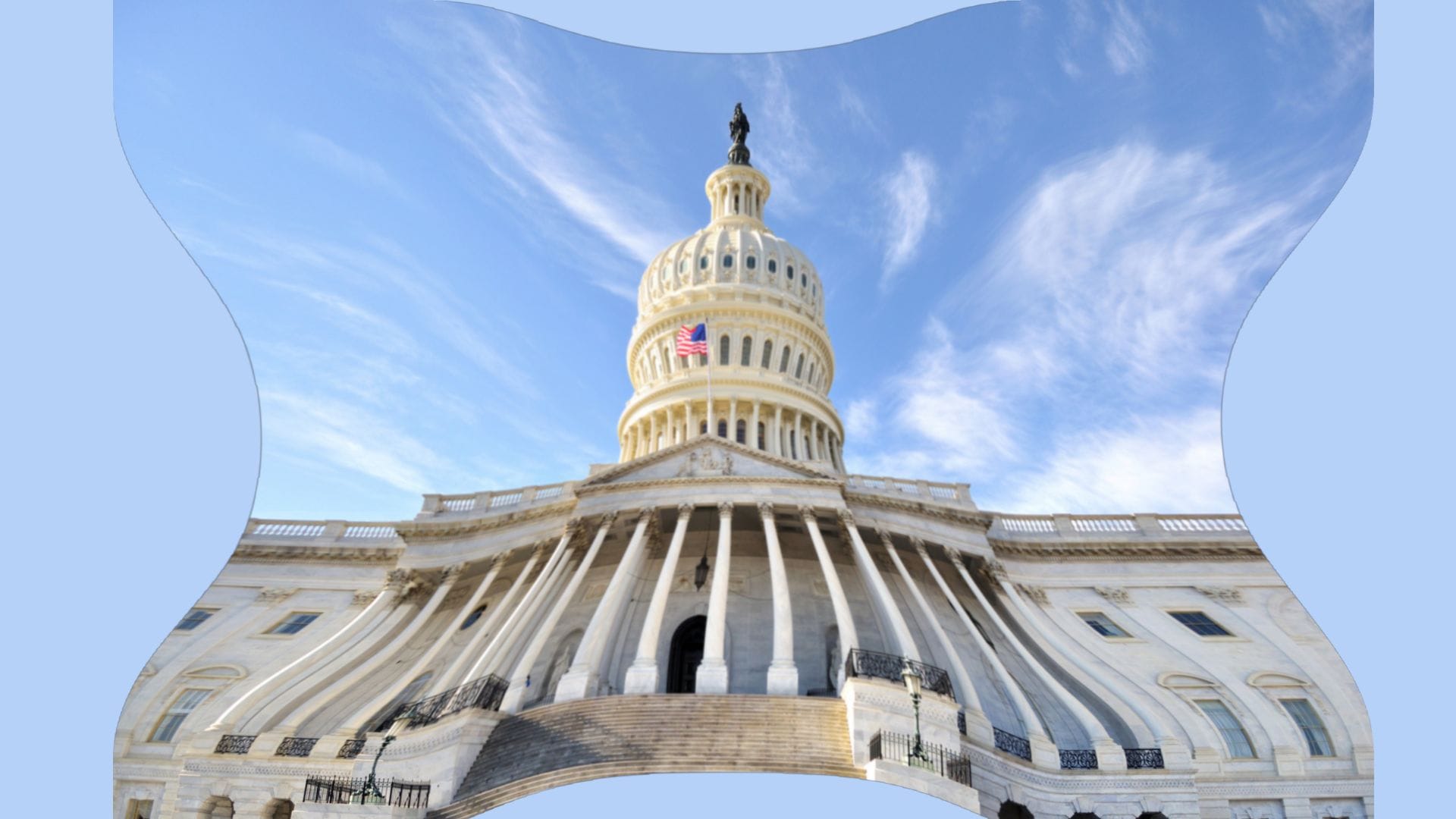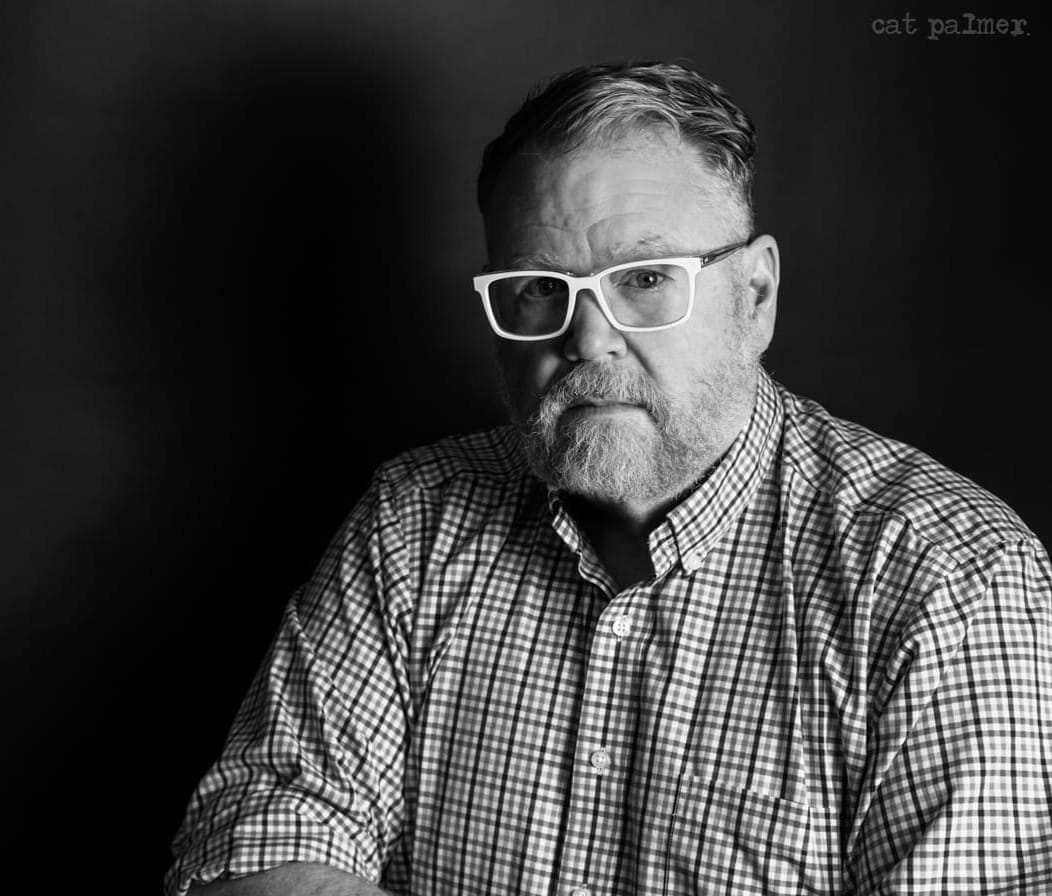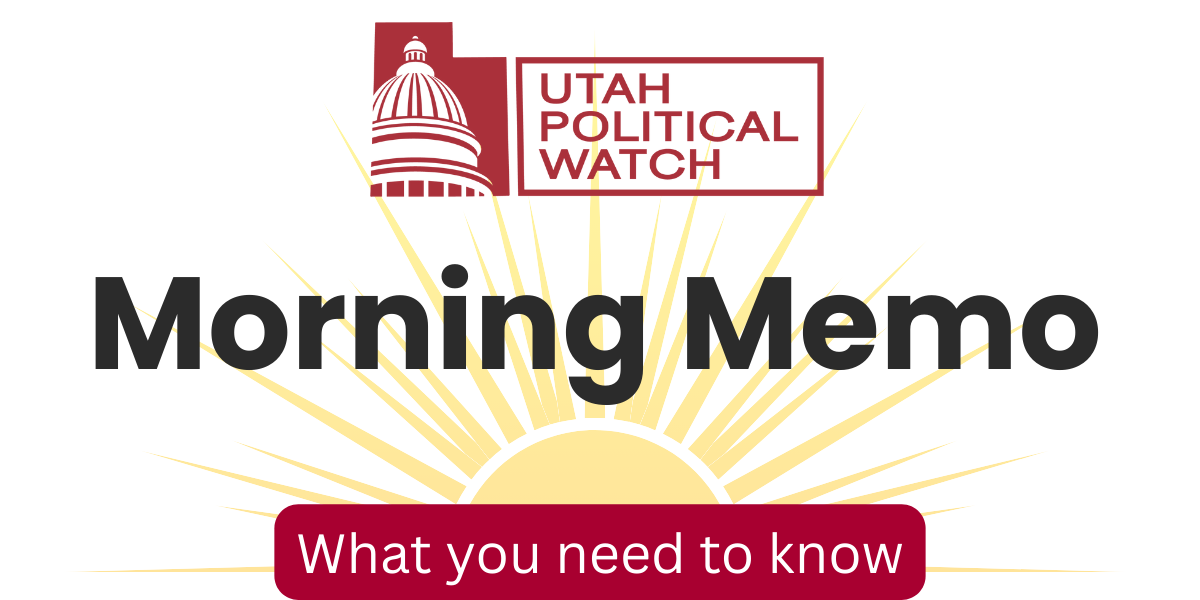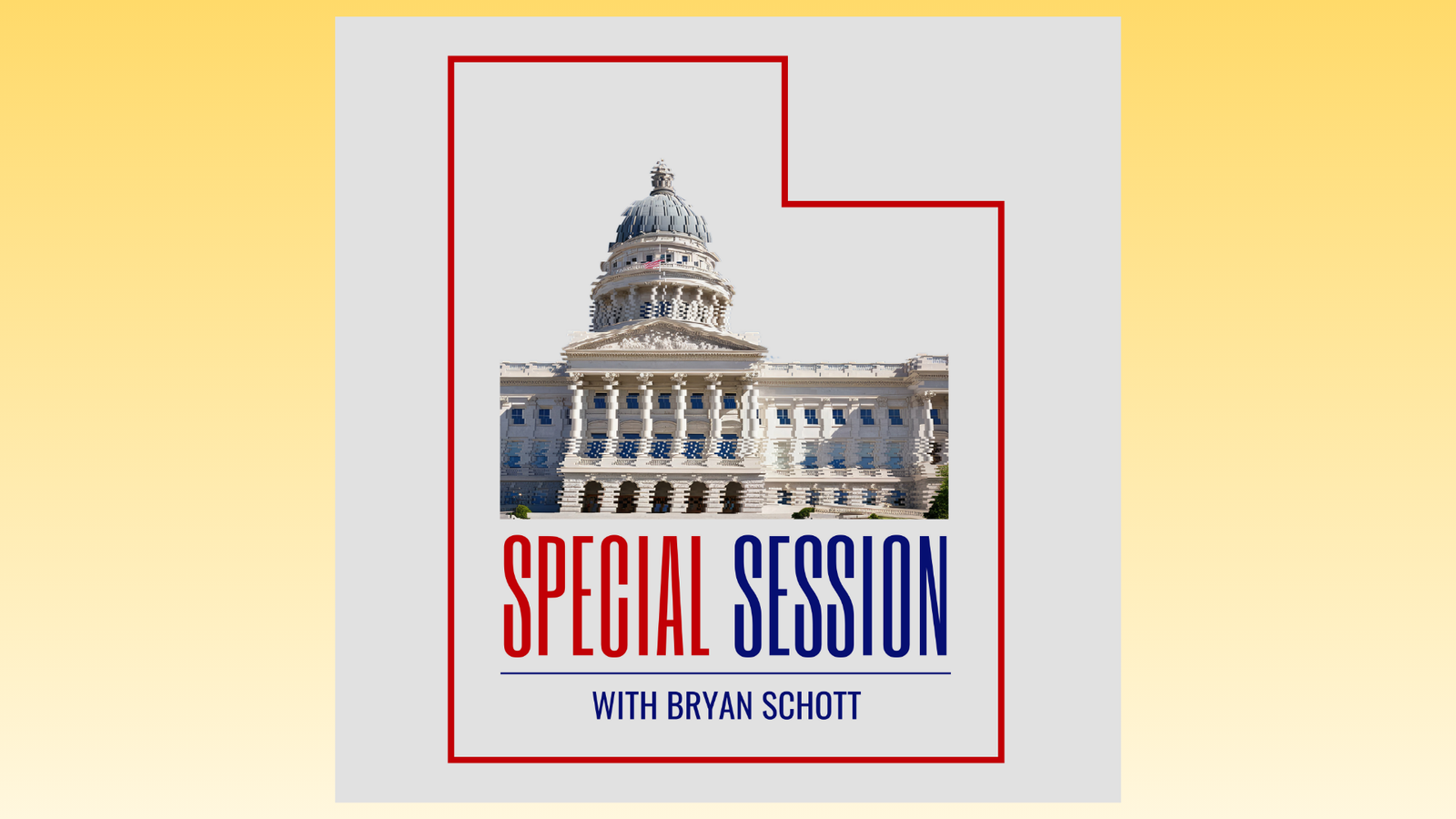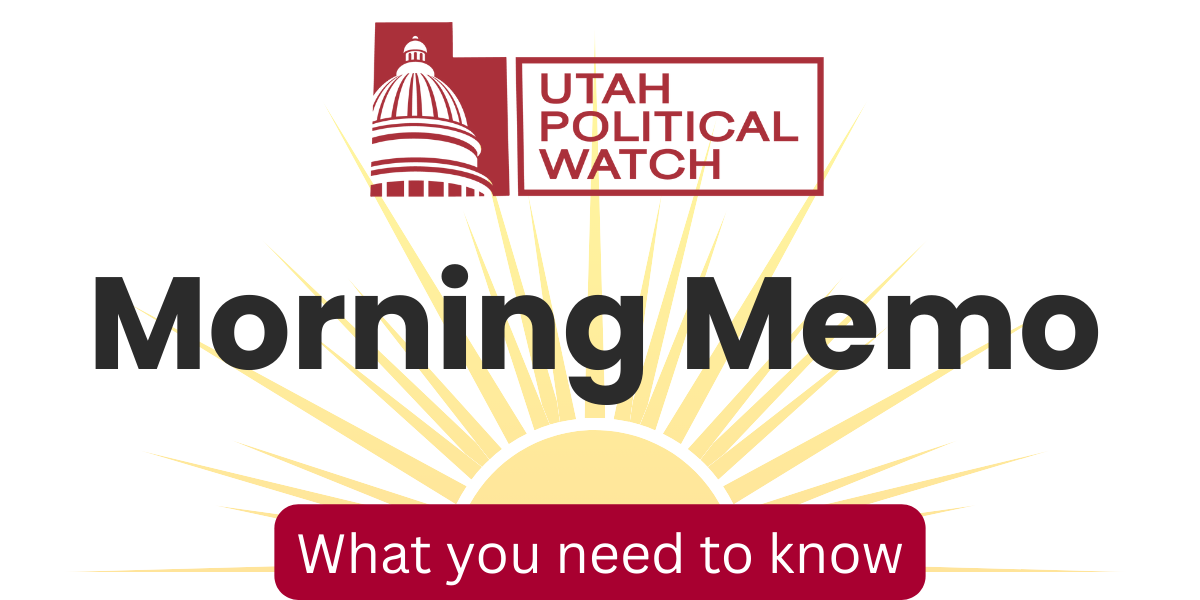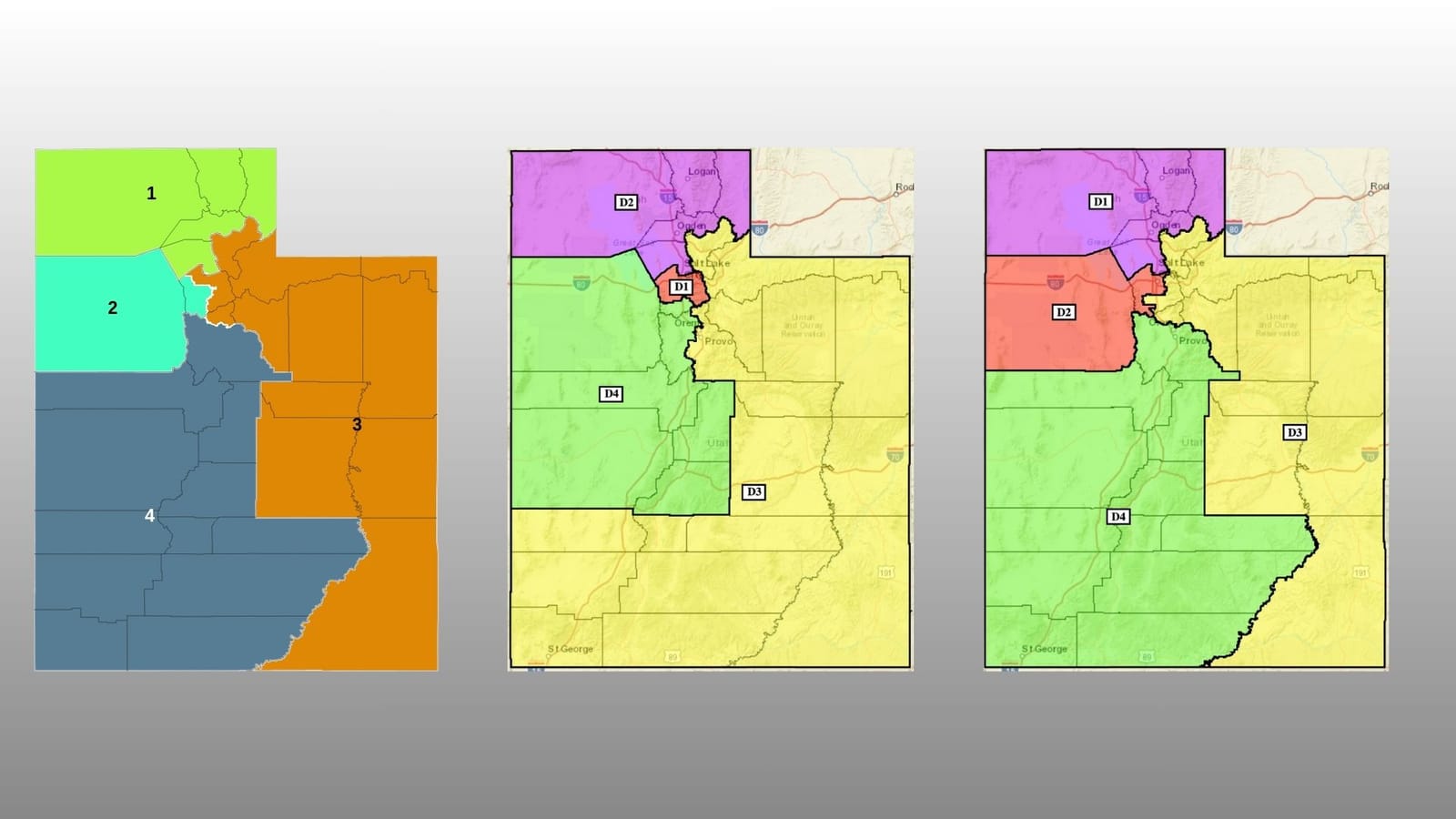The congressional map approved by Utah lawmakers on Monday could stuff three Republican incumbents into the same district, forcing two of them to campaign in districts where they can't even vote for themselves.
The map shuffle stems from the scramble following Utah Third District Judge Dianna Gibson’s ruling that the GOP-controlled legislature improperly killed Proposition 4, the anti-gerrymandering ballot measure approved by voters in 2018. That decision torpedoed the map they approved in 2021, forcing the rare mid-decade do-over.
Under the rules of Prop. 4, the redrawn maps must have equal populations across districts, minimize splitting counties, cities and communities of interest. The districts must be compact and the maps cannot favor or disadvantage a party, incumbent or candidate—including considering where an incumbent lives.
Using voter data provided to Utah Political Watch by the political data firm L2, it shows that Option C—the plan lawmakers approved on Monday—moves three of Utah’s four incumbent members of Congress inside the proposed 3rd District.
- Rep. Mike Kennedy, the current 3rd District incumbent, lives in Alpine.
- Rep. Blake Moore, the incumbent in the 1st District, is registered to vote in Salt Lake City.
- Rep. Burgess Owens, who represents CD4, lists his home in Draper.
Rep. Celeste Maloy, who lives in Cedar City, remains in CD2.
Moore’s residence along the East Bench in Salt Lake City is approximately 10 miles south of the nearest boundary of the proposed First District, which encompasses Davis, Weber, Box Elder, Cache and Rich counties. Moore was criticized during his first campaign for Congress in 2020 for living outside the 1st District. That issue was rendered moot when lawmakers moved his home inside the district lines with the 2021 map.
Owens would live about 2 miles east of the proposed 2nd District, which links western Salt Lake County with Tooele County. He already does not live inside the current 4th District; his home sits roughly 2 miles inside the 3rd, represented by Kennedy.
Option C appears to create four districts that Donald Trump carried in 2020 and 2024. But the 2nd and 3rd look more competitive, with Trump’s margins at 6.4 points or less.
Option C is not the only map proposal Gibson is currently evaluating. The plaintiffs in the case also submitted two map proposals on Monday.
Under map proposal 1, all four of Utah’s incumbent members of Congress would live in the district they represent. Under map 2, though, Kennedy and Owens would both live inside the boundaries of the 3rd District.
Jamming three of the state’s four members of Congress into the same district is unusual, but not illegal.
The Constitution only requires House members to be “inhabitants” of the state at the time of election. They do not have to live inside their district.
This would likely be the first time that three members of Congress would live inside the same congressional district. Georgia came close in 2017. GOP Rep. David Scott, then the 13th District member, lived in Democrat John Lewis’s 5th District. Democrat Jon Ossoff also lived in the 5th and would have been the third if he had won a special election that year.
Utah voters have seen this before. Former Rep. Jason Chaffetz served his first two terms while living outside the 3rd District. He was believed to be just the third House member to live outside district lines. Redistricting in 2011 moved him inside.
In 2012, Democrat Jim Matheson ran in the newly created 4th District instead of the 2nd, where he lived, after legislative Republicans gerrymandered his old seat.

